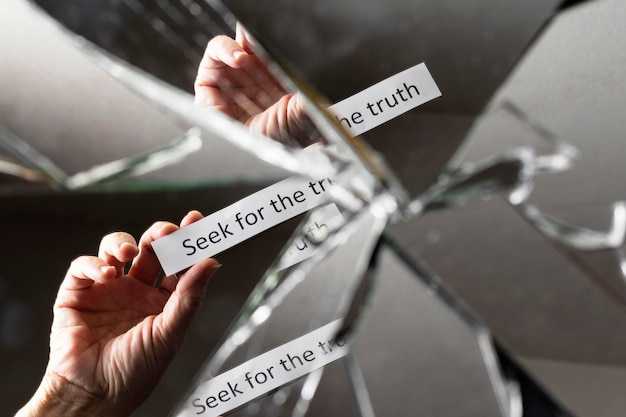Let’s be honest: you’re here because something about this situation feels wrong. You finally find someone who awakens you, you lower your defenses, you begin to picture a future together, and for a moment you allow yourself to hope that maybe this time it’s different. Then, out of nowhere, they pull back. Messages go unanswered, they stop reaching out, they grow distant and aloof — as if caring was a mistake. This rattles you. Your thoughts spiral: Did I move too fast? Should I have waited to reply? Maybe I’m too intense. None of that is true. You are not too much, you’re not losing your mind, and this does not make you unlovable. What you’re witnessing is a push–pull pattern, commonly linked to avoidant attachment. Don’t get hung up on the label; this isn’t about diagnosing anyone. It’s about making sense of hot-and-cold behavior so you can stop getting swept into that emotional seesaw. If you’re exhausted from chasing explanations and feeling rejected every time you let someone in, it’s time to change course. Right now you can learn why avoidant people retreat just as things warm up and how to respond in ways that protect your heart and restore your agency. Chasing someone who fears closeness won’t make them stay — it will erase pieces of you. Once you learn the mechanics of this dance, you stop performing by their rules. If you’re ready to stop overthinking and stop shrinking to fit someone else’s limits, read on. First, understand avoidant attachment. This isn’t about judging someone as damaged, playing therapist, or assigning blame. It’s about decoding confusing behavior so you stop turning another person’s emotional alarm into your personal failure. Here’s the reality: an avoidant person doesn’t necessarily fear love itself; they fear what love requires — vulnerability, emotional dependence, intimacy. When closeness begins, instead of thinking, “This is lovely,” their nervous system registers danger. Their body reacts as if a threat is approaching: heart rate spikes, defenses rise, and they shut down, withdraw, and distract themselves. That’s attachment activation — not a rational choice but a survival response. A bit of neuroscience helps clarify why: the amygdala, which governs fear, does not distinguish between emotional and physical threats. So emotional closeness can trigger an alarm system that they don’t fully understand. Often this wiring stems from early experiences where connection felt unsafe: caregivers who were unavailable, affection that was conditional, rejection, or punishment. Over time, love can feel foreign and closeness suffocating; when consistency and emotional availability appear, avoidants can perceive it as a loss of control — and control becomes paramount for anyone who learned that connection hurts. To reiterate: control matters to someone whose past taught them that dependency equals pain. This is not about vilifying them — everyone carries wounds and patterns — but awareness gives you the option to stop stepping into emotional quicksand hoping they’ll meet you halfway. Unless they’ve done deep inner work, they won’t reliably change, and you cannot do that work for them. The hardest part is that avoidants usually don’t intend to harm; they can genuinely care for you, even love you, but when your presence makes them feel engulfed, they instinctively retreat to protect themselves. Many don’t even realize they’re doing it. They might say, “I need space,” or, “It’s not you, it’s me,” or they might disappear altogether because confronting those feelings is unbearable. For you, it feels like a storm: one moment warmth and presence, the next coldness and distance. That inconsistency chips away at your self-esteem and drives you to try harder — to give more, to stay longer, to prove you’re safe — but love can’t be a rescue mission. You can’t fix someone who is committed to fleeing from their own vulnerability. You can show empathy, kindness, consistency, and forgiveness, but if you keep shrinking yourself to avoid triggering their fear, you’re abandoning your own needs. The takeaway: avoidants pull away not because they don’t feel, but because they feel too intensely and lack the capacity to contain it. Without awareness and committed healing, the closer you get, the more resistant they’ll be. Their withdrawal is protection, not rejection. Your power, then, is to stop chasing, stop trying to fix, and instead anchor in your own truth. Be a calm, steady presence — not by making yourself smaller to prove you’re safe, but by refusing to beg for a love that refuses to stay. Your nervous system deserves safety; your heart deserves consistency; love is not a prize to be earned through proximity, but a gift for someone who knows how to remain. If that’s not them, leave with your dignity and reclaim your power. Now that you understand what’s happening when they pull away, let’s cover what not to do next, because the choice you make now matters. Why does closeness make them retreat? You’re not yelling or demanding; you’re being vulnerable and loving, and yet they go cold: short replies, less eye contact, reduced affection, sudden busyness, excuses about being overwhelmed. That feels inexplicable, but here’s why: for someone with avoidant attachment, closeness equals loss of control. This isn’t just a personality quirk; it’s a survival strategy formed from childhood experiences where love was pressured, inconsistent, or weaponized. Their nervous system built an internal firewall that signals danger when someone gets emotionally near. The paradox is cruel: the more authentic and present you are, the more unsafe it feels to them — not because of you, but because of what intimacy symbolizes: dependence, exposure, risk. To borrow a metaphor, their heart is a house with faulty wiring: they’ll open the door a crack to something warm, but if you move in too close they slam it shut for fear the place will burn down. Even more confusing, they often return in small ways — breadcrumbs, a text, watching your stories — because they want connection on their own terms: closeness without vulnerability, feeling loved without showing up consistently. That’s the push–pull cycle: you lean in, they pull back; you retreat, they come near; you reach again, they disappear again. It’s not necessarily manipulation, though it feels that way; it’s a pattern born of self-protection. If you don’t grasp this, it will hijack your peace. You’ll assume their withdrawal is about you and escalate your efforts — long messages, explanations, excuses — and each attempt reinforces their belief that closeness is pressure. So hear this clearly: your desire for intimacy is not the problem. The problem is trying to build a bridge to someone living in emotional lockdown and expecting them to cross when they’re terrified of vulnerability. For example, if you say, “It helps me feel connected when we communicate more,” that’s honest, not needy. But an avoidant may hear it as a demand to surrender freedom, and defense mode triggers. They pull away, you feel rejected and push harder, they retreat further, and both of you end up anxious instead of connected. Their withdrawal is about how they interpret your need, equating closeness with obligation. You did not cause that wiring. You’re not trying to consume them — you’re trying to connect and grow. So what do you do? First, remember you are not too much. Your emotional openness is not a threat, and you mustn’t contort yourself to avoid scaring someone away. The moment you begin to shrink yourself to placate another’s fear, you’ve already abandoned your truth. Seek someone who sees closeness as safety, who moves toward you when love appears, not away. Now, concrete guidance: what absolutely not to do when they pull away. The panic that follows is not love; it’s a trauma response, and if you let it steer you, you’ll be dragged back into chaos. Do not chase: the instinct to pursue, explain, or beg is understandable, but chasing only confirms their terror that intimacy equals pressure. Instead, when they withdraw, pull inward — not to punish them, but to preserve your peace. Do not overexplain: long emotional paragraphs meant to break down the wall often land as more pressure. Words won’t bridge a gap created by someone’s need for space; steadiness, boundaries, and presence will. You are not on trial; you do not owe a defense of your feelings to someone who hasn’t asked. Do not blame yourself: the immediate thought, “What’s wrong with me?” brings old wounds forward. You showed up; their reaction reflects their fear, not your worth. Don’t carry a burden that isn’t yours. Do not try to be less: shrinking, silencing, or pretending not to care rarely makes someone available. Suppressing yourself to appease another is self-abandonment, not maturity. If love requires you to disconnect from yourself, it’s not love — it’s survival mode. Do not sacrifice your dignity for the sake of understanding them. Compassion is noble, but it becomes toxic when it morphs into emotional self-erasure. Their struggles do not obligate you to tolerate ongoing unavailability. You are not their therapist or fixer; your needs and standards matter. Do not passively wait it out: space can be healing, but putting your life on hold and hoping they eventually return is limbo, not generosity. If waiting leaves you anxious and depleted, it’s not healthy. So what should you do instead? Hold your center. When they pull away, pause, breathe, and ask, “What do I need right now? Where am I abandoning myself to feel chosen?” Then stop that. Maintain calm, keep your dignity, and refuse to beg someone who prefers fog over clarity. The right people who can love you fully aren’t confused or disappearing — they choose you. Choosing yourself the moment someone becomes uncertain changes everything: you move from chasing breadcrumbs to claiming a feast, from defending your worth to living it, from waiting on someone’s readiness to honoring your own. Next, flip the script with practical power moves that shift you from reaction to sovereignty. Power move one: hold your ground — stop shrinking, stop pursuing, and return to yourself. When withdrawal triggers the urge to fix things, instead choose stillness. Chasing only reinforces the avoidant’s belief that intimacy is pursuit; standing firm communicates, without drama, that you won’t lose yourself to someone else’s panic. There is no dignity in begging for connection from someone who refuses to be present. Go for a walk, journal, see a therapist, call a friend — find refuge in activities that remind you who you are. Power move two: reflect, don’t react — cultivate curiosity rather than chaos. Use the space they create to ask useful questions: What does this distance stir in me? Am I trying to earn love? Do I abandon myself when someone withdraws? Their behavior often mirrors and amplifies your unresolved patterns; awareness is freedom. You cannot change them, but you can change how you respond. Before reacting, put your hand on your heart, breathe, and ask what part of you needs attention. Become your own safe haven. Power move three: mirror their energy with grace — step back without weaponizing your response. Mirroring isn’t a game; it’s an energetic adjustment. If they need space, honor that while also honoring yourself by creating distance to protect your nervous system. Don’t ghost or retaliate; step back calmly and intentionally with kindness. That stillness communicates, “I’m here when you’re ready, but I won’t wait in pain.” This contrast between your steadiness and their anxiety can be the nudge that catalyzes change — not your pleading, but your peace. These three moves work together: hold your ground, reflect instead of react, and mirror with grace. They not only help you manage avoidant behavior but also transform the pattern within you that repeatedly attracts this dance. You’re not only learning about avoidant people — you’re healing the part of you that keeps rescuing emotional instability and proving your worth through sacrifice. The goal is to be chosen because you’ll no longer beg for it. Next, how to remain emotionally grounded when the silence becomes a storm: knowing the theory is one thing, but in the moment, your body can override your intentions. To truly stay anchored, start with biology. Step one: regulate first, respond later. When someone pulls away, your nervous system can trigger fight (lash out), flight (shut down), freeze (paralysis), or fawn (over-accommodate). Awareness is step one; regulation is step two. Three practical tools to use immediately: A. Box breathing (4–4–4–4): inhale for four counts, hold four, exhale four, hold four — repeat for two or three minutes to slow heart rate and return from survival mode. B. Grounding touch: place a hand on your chest and another on your belly and say, “I am safe in my body. I don’t need to chase safety outside of me.” This somatic cue speaks to the nervous system in ways words can’t. C. 5–4–3–2–1 grounding: identify five things you see, four you can touch, three you can hear, two you can smell, one you can taste — a simple present-moment anchor that repairs nervous system dysregulation. You can’t change their behavior, but you can shift your physiology — and that’s where your power lies. Step two: reorient to your own needs. Once you’re calmer, stop centering them in your story and ask, “What do I need right now that has nothing to do with them?” Maybe you need to feel heard, to be reminded of your worth, or to allow yourself grief without judgment. Name it and honor it — clarity about your needs builds boundaries that protect your heart. Step three: speak to yourself as you would to someone you’d defend fiercely. If your best friend were heartbroken, you wouldn’t blame them — you’d offer reassurance. Replace critical self-talk with affirmations: “I am safe even when others are distant. My love is not a burden. I deserve steady connection. I choose peace over panic.” Repeat these until they override the old shame-driven script. Step four: anchor in the present, not in possible futures. It’s easy to cling to what could be, to rehearse the good moments, and to imagine a future where they change. Potential is not partnership. Ask, what are they actually showing you today? If the present leaves you anxious and confused, that’s not healthy love. Return to your breath and the current moment — healing happens here, not in the past or in “what ifs.” Promise yourself: no matter who pulls away, you will not pull away from yourself. You will breathe instead of beg, reflect instead of react, and stay because you are your own home. You can’t control outcomes, but you can control how you show up — and that is transformation. Finally: the long-term shift. If you live from peace and stop chasing potential, you break the pattern and begin to attract love that matches the person you’ve become, not the person you tried to save. A direct message to the weary version of you who overgives and overthinks: you’re not too intense or broken, and you are not the reason someone else can’t stay. Avoidant behavior reflects their wounds, not your worth. But the habit of chasing breadcrumbs does reflect something inside you that believes love must be earned. Your new truth: you don’t have to chase, earn, or bleed for love. You are already enough. The right partner won’t make you question that; they won’t disappear when things deepen or punish you for honesty. They will match you, stay with you, and provide consistency. Choose peace. Choose yourself. Become the steady presence you kept seeking elsewhere so you create room for a love that feels like home — not chaos. If this message landed in your chest as a quiet yes, let it be the turning point: stop waiting for them to return and start returning to yourself. Now go live it. Wishing you calm and good fortune. If this video inspired you, please like, subscribe, and tap the notification bell so you won’t miss future content. If there’s a topic you want covered, leave a comment below — every view, like, and comment helps fuel more meaningful videos and sends goodwill out into the world. Thank you sincerely.



 Why They Pull Away When You Get Closer – The Truth Avoidants Don’t Want You To Know | Mel Robbins">
Why They Pull Away When You Get Closer – The Truth Avoidants Don’t Want You To Know | Mel Robbins">

 STOP Trying to Make People Respect You & DO THIS Instead">
STOP Trying to Make People Respect You & DO THIS Instead">
 How to Build a Loving Relationship with an Avoidant Without Getting Hurt">
How to Build a Loving Relationship with an Avoidant Without Getting Hurt">
 Help! My Girlfriend has too much Masculine Energy!">
Help! My Girlfriend has too much Masculine Energy!">
 5 Signs an Avoidant Is Secretly in Love With You">
5 Signs an Avoidant Is Secretly in Love With You">
 5 Red Flags You’re Dating an Avoidant Man (Don’t Ignore These!)">
5 Red Flags You’re Dating an Avoidant Man (Don’t Ignore These!)">
 6 Relationship RULES that CHANGED Everything">
6 Relationship RULES that CHANGED Everything">
 Wife finds another "Sale"">
Wife finds another "Sale"">
 The Real Reason It’s So Hard to Recover from Childhood PTSD">
The Real Reason It’s So Hard to Recover from Childhood PTSD">
 Should I break up with him?">
Should I break up with him?">
 7 Habits That Easily Re-Ignited Her Arousal">
7 Habits That Easily Re-Ignited Her Arousal">